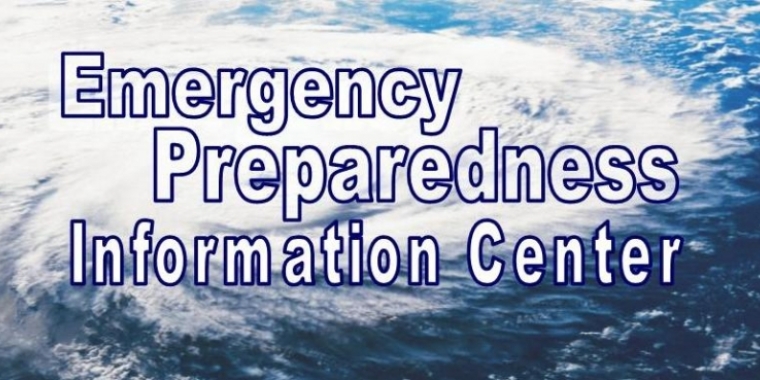
Emergency Preparedness Information Page
July 17, 2019
-
ISSUE:
- Emergency Preparedness

EMERGENCY PREPAREDNESS INFORMATION : IMPORTANT PHONE NUMBERS AND WEB SITES
bereadyli - The BeReadyLI Initiative is a collaboration between PSEG Long Island, United Way of Long Island, and 2-1-1 Long Island. The initiative is designed to help Long Islanders be prepared before, during, and after a disaster. By following a few simple steps, you can help protect your entire family in the case of an emergency.
National Preparedness Month Page
PSEG Long Island: Hurricane Safety: Before, During and After the Storm
UPDATES ON UPCOMING WEATHER
To find a shelter near you, text SHELTER and your zip code to #43362 (4FEMA). Or, you can reach the American Red Cross at their web site at www.nyredcross.org
Pet Friendly Shelters In Suffolk County
Suffolk County Emergency Shelters
To report power outages or downed power lines: PSEG Long Island Hotline: (800) 490-0075
24-Hour Gas Emergency Service: National Grid: 800-490-0045 or 911
INFORMATION ON MASS TRANSIT
For road closures and additional information regarding transportation in our area, please check NY511’s website by clicking here.
MTA/LIRR online: www.mta.info
SAFETY TIPS
Red Cross Hurricane Safety Guide
New York State Aware Prepare Web Site - Tips from NYS
Suffolk County Emergency Preparedness Web Site
Suffolk County Fire Rescue and Emergency Services Facebook Page
American Red Cross of Greater New York Region
American Red Cross Emergency Preparedness Tips
Federal Government's READY.GOV
HOW TO PREPARE YOUR FAMILY
Click here for important information from
the Suffolk County Office of Emergency Management
Disaster Preparedness Plan from American Red Cross
Family Disaster Plan Template From American Red Cross
Planning Tips from the Federal Emergency Management Agency (FEMA)
Suffolk County Smart911 Registry
PREPARING YOUR PETS FOR EMERGENCIES
- Pet carrier/cage with toy
- Food and water
- Leash/harness with ID tag
PET EMERGENCY EVACUATION AND SHELTERING TIPS
Plan ahead by calling hotels and motels outside of your immediate area to see if they accept pets
Ask friends and relatives who are out of the evacuation area if they could shelter your vet
Prepare a list of boarding facilities, veterinarians or animal shelters that provide emergency shelters
If you must evacuate, the best way to protect your pets is to evacuate them too— do not leave them behind where they can be injured or lost!
Pet Friendly Shelters In Suffolk County
Centers for Disease Control: Protect Your Pets In An Emergency
ASPCA: Disaster Preparedness For Pets
Information from the New York State Division of Homeland Security
Local Numbers:
Town of Smithtown Department of Public Safety - (631) 360-7553
Town of Smithtown's Hurricane Preparedness Page
Town of Brookhaven Department of Public Safety - (631) 451-6291
Town of Huntington Department of Public Safety - 24 Hour Emergency Hotline (631) 351-3234
Information from the Red Cross on Sheltering in Place - One of the instructions you may be given in an emergency where hazardous materials may have been released into the atmosphere is to shelter-in-place. This is a precaution aimed to keep you safe while remaining indoors. (This is not the same thing as going to a shelter in case of a storm.) Shelter-in-place means selecting a small, interior room, with no or few windows, and taking refuge there. It does not mean sealing off your entire home or office building. If you are told to shelter-in-place, follow the instructions provided in this Fact Sheet.
EVACUATION TIPS
SPECIAL EVACUATION INSTRUCTIONS
If you must evacuate, take only necessities from the Household Preparation List, including items under "documentation"
ALSO:
Bring blankets or sleeping bags and pillows, extra clothing, eye glasses, rain gear, toiletries and hygiene products, quiet games, reading material, tools, etc.
Also, take a map, since you may encounter detours.
Be prepared to turn off electrical power when there is standing water, fallen power
lines, or before you evacuate.
Turn off gas and water supplies before you evacuate. Secure structurally unstable building materials.
Please use the information below to get ready and stay ready in the event of an emergency:
- Have a plan for you and your family.
- Know the hurricane risks in your area – learn the storm surge history and elevation of your area.
- Learn about local community's sheltering plans, including the location of official shelters.
- Pay attention to the news. Know the Emergency Alert System radio and television stations in your area that will carry official information. Also, monitor NOAA Weather Radio broadcasts, if possible.
- Learn the warning signals and evacuation plans of your community.
- Ensure that enough non-perishable food and water supplies are on hand.
- Have at least a one-week supply of medications on hand.
- Determine if your family has any special needs and develop a plan for meeting those needs. For example: If you have a family member on a life-support system, does your electric utility know about it? Individuals with special needs or others requiring more information should contact their County Emergency Management Office.
- Make plans now on what to do with your pets should you be required to evacuate your residence. Public health regulations do not allow pets in public shelters, nor do most hotels/motels allow them.
- Teach all family members, including children, how and when to call 911 or your local EMS phone number.
- Post emergency telephone numbers by phones.
- Discuss with family members what they should do in the event of a disaster, such as a hurricane or severe storm. Pick two places to meet: a spot outside your home for an emergency, such as a fire, and a place away from your neighborhood in case you cannot return home.
- Designate an out-of-area friend or relative whom separated family members should call to report their whereabouts. Make certain all family members have the phone number.
- Install safety features in your residence such as smoke detectors and fire extinguishers.
- Know how and when to turn off water, gas and electricity in your home.
- Check your home and property for potential hazards to see what actions need to be taken to ensure your safety and to protect your belongings.
- Review your insurance policy. Flood damage is not usually covered by homeowners insurance. Inventory household items with photographs.
- Obtain and store materials, such as plywood, necessary to properly secure your home.
- Clear loose and clogged rain gutters and downspouts.
- Keep trees and shrubbery trimmed of dead wood.
- Determine where to move your boat in an emergency.
Household Preparedness Checklist:
Recommended Supplies to Include in a Basic Kit:
From "Preparing for Disaster." Developed by the American Red Cross and the Department of Homeland Security, Federal Emergency Management Agency.
There are six basics you should stock for your home: water, food, first aid supplies, clothing and bedding, tools and emergency supplies, and special items. Keep the items that you would most likely need during an evacuation in an easy-to carry container--suggested items are marked with a red asterisk(*). Possible containers include a large, covered trash container, a camping backpack, or a duffle bag.
Water
Store water in plastic containers such as soft drink bottles. Avoid using containers that will decompose or break, such as milk cartons or glass bottles. A normally active person needs to drink at least two quarts of water each day. Hot environments and intense physical activity can double that amount. Children, nursing mothers, and ill people will need more.
Store one gallon of water per person per day. Keep at least a three-day supply of water per person (two quarts for drinking, two quarts for each person in your household for food preparation/sanitation).
Food
Store at least a three-day supply of non-perishable food. Select foods that require no refrigeration, preparation or cooking, and little or no water. If you must heat food, pack a can of sterno. Select food items that are compact and lightweight. Include a selection of the following foods in your Disaster Supplies Kit:
- Ready-to-eat canned meats, fruits, and vegetables
- Canned juices
- Staples (salt, sugar, pepper, spices, etc.)
- High energy foods
- Vitamins
- Food for infants
- Comfort/stress foods
First Aid Kit - Assemble a first aid kit for your home and one for each car.
- (20) adhesive bandages, various sizes.
- (1) 5" x 9" sterile dressing.
- (1) conforming roller gauze bandage.
- (2) triangular bandages.
- (2) 3 x 3 sterile gauze pads.
- (2) 4 x 4 sterile gauze pads.
- (1) roll 3" cohesive bandage.
- (2) germicidal hand wipes or waterless alcohol-based hand sanitizer.
- (6) antiseptic wipes.
- (2) pair large medical grade non-latex gloves.
- Adhesive tape, 2" width.
- Anti-bacterial ointment.
- Cold pack.
- Scissors (small, personal).
- Tweezers.
- CPR breathing barrier, such as a face shield.
- Non-Prescription Drugs
- Aspirin or non-aspirin pain reliever
- Anti-diarrhea medication
- Antacid (for stomach upset)
- Syrup of Ipecac (use to induce vomiting if advised by the Poison Control Center)
- Laxative
- Activated charcoal (use if advised by the Poison Control Center)
Tools and Supplies
- Pliers
- Mess kits, or paper cups, plates, and plastic utensils
- Emergency preparedness manual
- Battery-operated radio and extra batteries
- Flashlight and extra batteries
- Cash or traveler's checks, change
- Non-electric can opener, utility knife
- Fire extinguisher: small canister ABC type
- Tube tent
- Tape
- Compass
- Matches in a waterproof container
- Aluminum foil
- Plastic storage containers
- Signal flare
- Paper, pencil
- Needles, thread
- Medicine dropper
- Shut-off wrench, to turn off household gas and water
- Whistle
- Plastic sheeting
- Map of the area (for locating shelters)
- Sanitation
- Toilet paper, towelettes
- Soap, liquid detergent
- Feminine supplies
- Personal hygiene items
- Plastic garbage bags, ties (for personal sanitation uses)
- Plastic bucket with tight lid
- Disinfectant
- Household chlorine bleach
- Clothing and Bedding
- Include at least one complete change of clothing and footwear per person.
- Sturdy shoes or work boots
- Rain gear
- Blankets or sleeping bags
- Hat and gloves
- Thermal underwear
- Sunglasses
Special Items - Remember family members with special requirements, such as infants and elderly or disabled persons
For Baby:
- Formula
- Diapers
- Bottles
- Powdered milk
- Medications
For Adults:
- Heart and high blood pressure medication
- Insulin
- Prescription drugs
- Denture needs
- Contact lenses and supplies
- Extra eye glasses
Entertainment
- Games and books
Important Family Documents
Keep these records in a waterproof, portable container:
- Inventory of valuable household goods, important telephone numbers
- Family records (birth, marriage, death certificates)
- Store your kit in a convenient place known to all family members. Keep a smaller version of the supplies kit in the trunk of your car.
- Keep items in airtight plastic bags. Change your stored water supply every six months so it stays fresh. Replace your stored food every six months. Re-think your kit and family needs at least once a year. Replace batteries, update clothes, etc.
- Ask your physician or pharmacist about storing prescription medications.
- Will, insurance policies, contracts deeds, stocks and bonds
- Passports, social security cards, immunization records
- Bank account numbers
- Credit card account numbers and companies
Share this Article or Press Release
Newsroom
Go to NewsroomNewsday - LI Districts May Get Second Chance On Aid
January 24, 2012
News12: Senator Flanagan Discusses Governor Cuomo’s Budget Proposal
January 18, 2012
